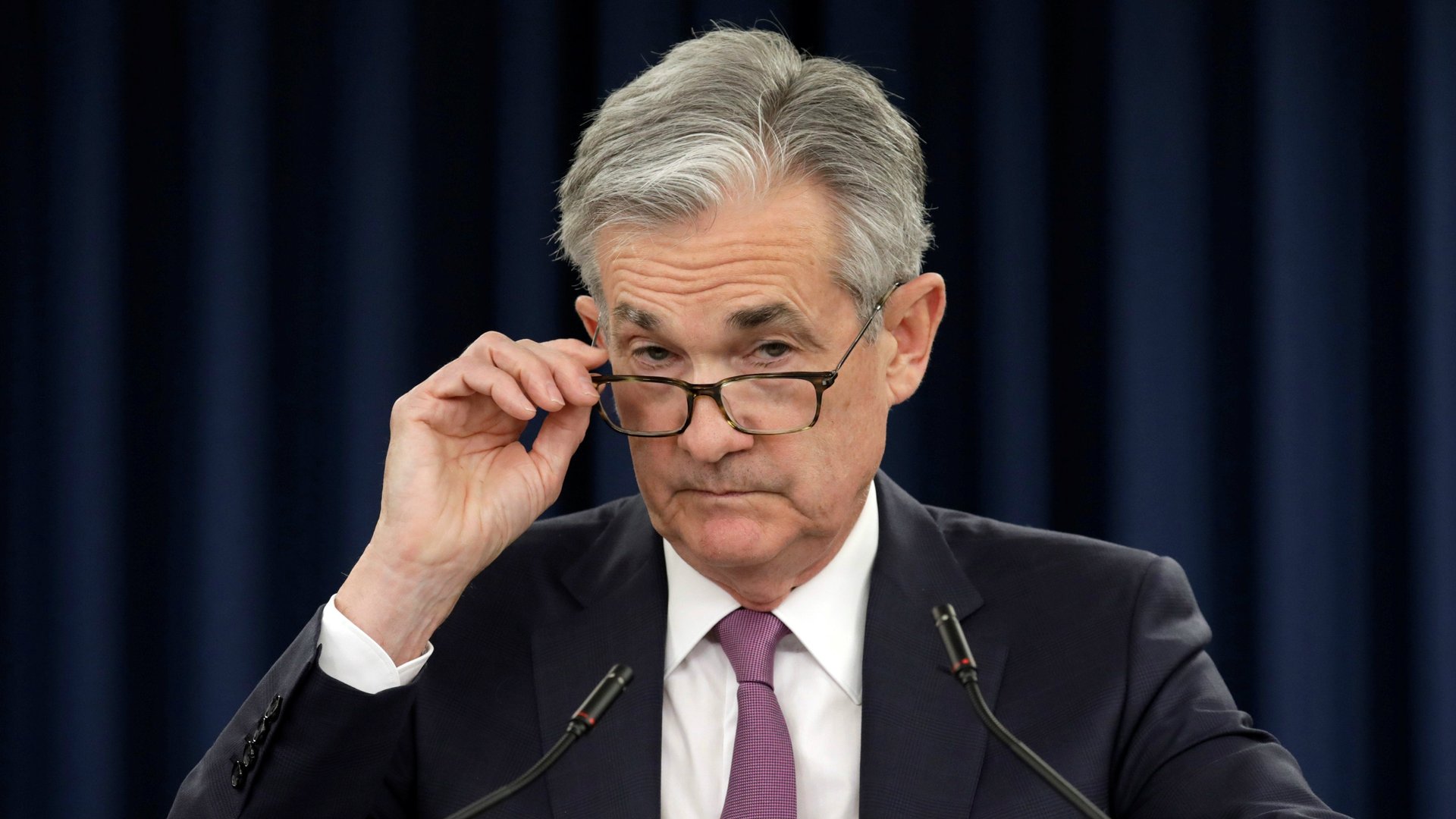Investors are betting on a rate cut. They shouldn’t.
The US government released a disappointing jobs report last week and instead of tanking, the stock market has climbed steadily upward.


The US government released a disappointing jobs report last week and instead of tanking, the stock market has climbed steadily upward.
Why? Many market soothsayers are expecting the Federal Reserve to cut rates in July, and any sign of a sluggish economy supports their theory. The assumption is based on remarks from both chairman Jay Powell and vice-chair Richard Clarida, who last week said that they would consider the impact of trade issues on the economy when they set policy. Meanwhile, long-term bond yields dropped, which—combined with the lackluster job reports—also suggests a boost from the Fed is forthcoming. But before you bet on a rate cut, it is worth asking two questions.
Is a rate cut really imminent?
It is impossible to know for sure. There are reasons to doubt it. Now that the threat of a trade war with Mexico has passed, it seems the Fed may feel less need for an immediate rate cut. Clarida and Powell’s statements make clear that any rate cut would be in response to economic weakness, but the economy is not that weak. It is true the economy created fewer jobs than people hoped, with 75,000 new jobs created instead of the predicted 180,000. But with the economy nearly 11 years into a recovery, it’s not surprising growth is slowing, even if it is still positive. There is only so low unemployment can go and at this stage a slower pace is not necessarily weakness.
The inversion of the yield curve, in which short-term interest rates are higher than medium term rates, is also taken as a sign by markets of an anticipated rate cut because long-term rates reflect expectations about future short-term rates. But long-term rates also include a risk premium, and more economic uncertainty increases the demand for safer assets, which lowers the risk premium, drives down yields, and inverts the curve. The notion the yield curve is telling investors something about future rates is based on an assumption bond traders know something about Fed policy everyone else doesn’t. But they don’t—they have no special or inside information.
Advocates for a rate cut point to a weaker global economy and economic indicators like slowing manufacturing growth. They argue a rate cut would provide a form of insurance by propping up the stock and housings market to prevent a recession from setting in, or just to reassure investors the Fed is committed to avoiding a down turn. But the insurance arguments assumes a rate cut would invigorate the stock market for more than a day or two, which is unlikely.
Would a rate cut do much to boost the economy?
Cutting the Fed Funds rate is intended to lower the cost of investment, boost lending, and encourage more economic activity. But when the economy has been growing for 11 years, it is not clear that rate cut will achieve this. Interest rates are still at near record lows and it is hard to argue investors will be that responsive to another 25 basis point rate cut (a basis point is one hundredth of one percent). Besides, if the latest tax cuts did not do much to spur investment, why would a cut to the Fed Funds rate make a difference?
True, the economy is slowing and labor market participation is still lower than it was before the recession. But it could be argued these headwinds are structural, due to factors like slowing productivity growth or workers who lack certain skills or who live too far from where the jobs are. While monetary policy can be useful to even out blips in the business cycle and lessen the blow of a recession, it cannot do much to alleviate structural problems in the economy.
There may even be harm in a rate cut. Lower rates pose costs to institutional investors, like pension funds, because lower rates mean their liabilities are more expensive. David Kelly, JP Morgan’Chase’s chief global strategist, writes in his weekly update that rate cuts could embolden the administration to prolong an already destructive trade war. Combined with rate cuts that were insufficiently stimulating, it could form a “witch’s brew” that may push the economy into recession.
Any policy poses trade-offs and has costs and benefits. It is not clear what the long-term benefits are to another rate cut, but it is clear there are risks.